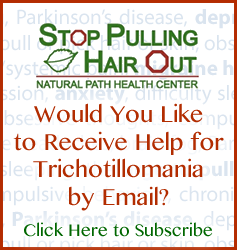 I was just looking for credible information on the web about how to cope with trichotillomania when I came across this article: http://www.wikihow.com/Cope-with-Trichotillomania. It lists several steps to help people determine if they might have trichotillomania and provide some suggestions on what they may do about it.
I was just looking for credible information on the web about how to cope with trichotillomania when I came across this article: http://www.wikihow.com/Cope-with-Trichotillomania. It lists several steps to help people determine if they might have trichotillomania and provide some suggestions on what they may do about it.
In particular, the fourth step listed is to “Determine if trichotillomania is the only disorder that’s affecting you.” This is quite insightful, as we often find that people that suffer from trich also have at least one other symptom that indicates they may be suffering from an imbalance in neurotransmitter function, including depression, anxiety, obsessive-compulsive disorder, bipolar disorder, migraines, sleep problems, phobias, food cravings, binge eating and even sleep disturbances. As you’ve learned on this site, all of these disorders can be caused by the same root imbalance in neurotransmitter function. The good news is that once proper neurotransmitter function is restored, all symptoms related to the imbalance go away.
The article goes on to list numerous ways a person can try to get a handle on trich on their own. The very last step is to get help. We have found that most people with trichotillomania can get only so far without rebalancing their neurotransmitters. They may be able to stop themselves from pulling using the approaches listed, but most still have a constant or near-constant urge to pull and they expend a great amount of energy and effort to not pull.
The difference between this approach and ours is that once we find the right amount and combination of amino acids and cofactors needed to restore your proper neurotransmitter function, the urge itself is eliminated, which frees up an incredible amount of energy. The self-awareness steps listed in the article will still be useful to help you deal with the habit of pulling, but the urge to pull will no longer haunt you so you will no longer have to rely on will-power alone to stop you from pulling.

